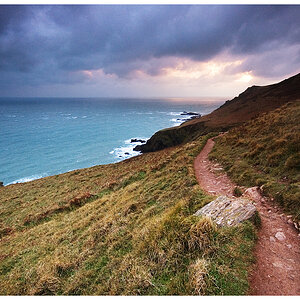Navigation
Install the app
How to install the app on iOS
Follow along with the video below to see how to install our site as a web app on your home screen.

Note: This feature currently requires accessing the site using the built-in Safari browser.
More options
You are using an out of date browser. It may not display this or other websites correctly.
You should upgrade or use an alternative browser.
You should upgrade or use an alternative browser.
stupid question
- Thread starter robwst7
- Start date
- Joined
- Sep 2, 2003
- Messages
- 34,548
- Reaction score
- 7,572
- Location
- In the mental ward of this forum
- Can others edit my Photos
- Photos NOT OK to edit
Depends on the quality of B&W you want.  You'll get better tonal values in a print if you shoot B&W film. It's cheap to develop at home and then you have B&W negatives to pick from, and ask a lab to print up - and tell them not to use color darkroom paper.
You'll get better tonal values in a print if you shoot B&W film. It's cheap to develop at home and then you have B&W negatives to pick from, and ask a lab to print up - and tell them not to use color darkroom paper. 

mysteryscribe
TPF Noob!
- Joined
- Feb 1, 2006
- Messages
- 6,071
- Reaction score
- 3
- Location
- in the middle of north carolina
- Website
- retrophotoservice.2ya.com
- Can others edit my Photos
- Photos OK to edit
It is my opinion that black and white negative make better images than color negative or even digital files. That said it is also my opinion that converting them to digital then having prints made on a digital printer is a pretty good way to get you image done.
Before I get tarred and feathered by terri and the other darkroom people let me say this. I shoot black and white for the strength of the imagery not the quality of the print. Just the kinda guy I am. I dont have problem with blown out highs and black out lows or anything in between. To me it's about the feel of the image. So don't take what I say too seriously.
Before I get tarred and feathered by terri and the other darkroom people let me say this. I shoot black and white for the strength of the imagery not the quality of the print. Just the kinda guy I am. I dont have problem with blown out highs and black out lows or anything in between. To me it's about the feel of the image. So don't take what I say too seriously.
JamesD
Between darkrooms
- Joined
- Mar 20, 2005
- Messages
- 1,054
- Reaction score
- 44
- Location
- Living in Snapshot reality.
- Can others edit my Photos
- Photos NOT OK to edit
You used to be able to get a black and white photo paper called "Panalure" from Kodak which was specifically designed for printing color negatives. It was sensitive to all colors, whereas regular black and white paper is insensitive to red.
In fact, graded BW papers are sensitive mostly to blue, a little bit to green, and not at all to red (someone correct me if I'm wrong). And variable contrast papers are coated with two emulsions, one sensitive to blue, and one sensitive to blue and green. The blue-sensitive emulsion makes high-contrast images, while the green-sensitive emulsion makes low-contrast images. The result is that your tones won't be right with graded papers (portions of the image which were cyan (blue-green) will be very dark in the final print, for instance. With VC papers, the effects will be even funkier as parts of the image which were originally yellow will be very high contrast, but portions which were magenta (red + blue) will be low contrast, and the cyan areas will be black. Or so the theory says--again, someone correct me if I'm wrong.
So, the simple answer is that with film, you're usually better off using a black-and-white film for black and white prints. Of course, there are always exceptions.
-JamesD
In fact, graded BW papers are sensitive mostly to blue, a little bit to green, and not at all to red (someone correct me if I'm wrong). And variable contrast papers are coated with two emulsions, one sensitive to blue, and one sensitive to blue and green. The blue-sensitive emulsion makes high-contrast images, while the green-sensitive emulsion makes low-contrast images. The result is that your tones won't be right with graded papers (portions of the image which were cyan (blue-green) will be very dark in the final print, for instance. With VC papers, the effects will be even funkier as parts of the image which were originally yellow will be very high contrast, but portions which were magenta (red + blue) will be low contrast, and the cyan areas will be black. Or so the theory says--again, someone correct me if I'm wrong.
So, the simple answer is that with film, you're usually better off using a black-and-white film for black and white prints. Of course, there are always exceptions.
-JamesD

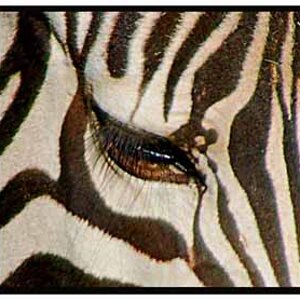


![[No title]](/data/xfmg/thumbnail/34/34065-43f99c081a04bd087c00711d2fe010ee.jpg?1619736261)
![[No title]](/data/xfmg/thumbnail/34/34063-09779b4ba56a0acb2b0fa36cf8720dfb.jpg?1619736260)

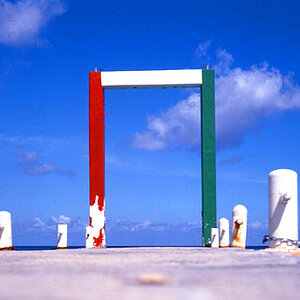
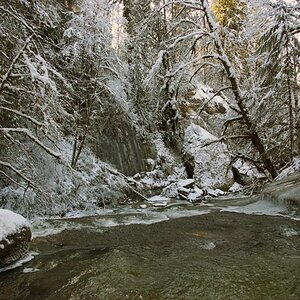
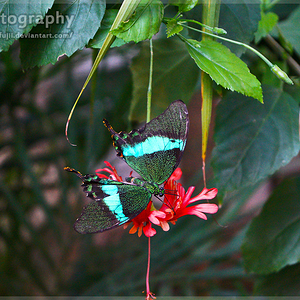
![[No title]](/data/xfmg/thumbnail/31/31980-e5048a424621c7b3cd0d306d63c09d67.jpg?1619735137)

